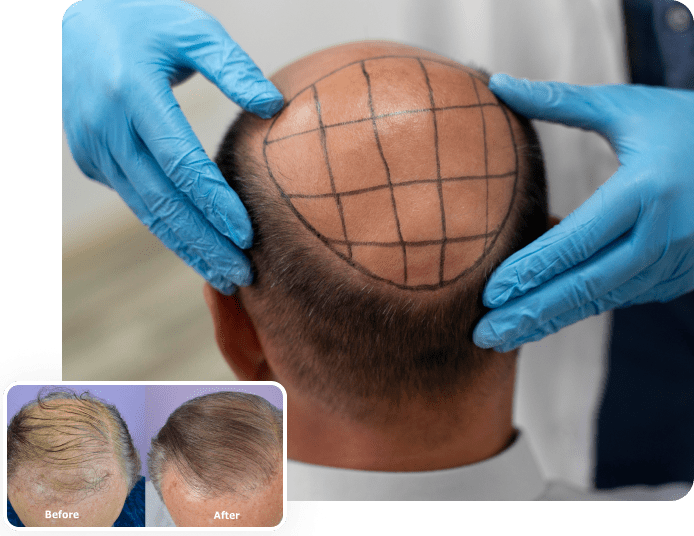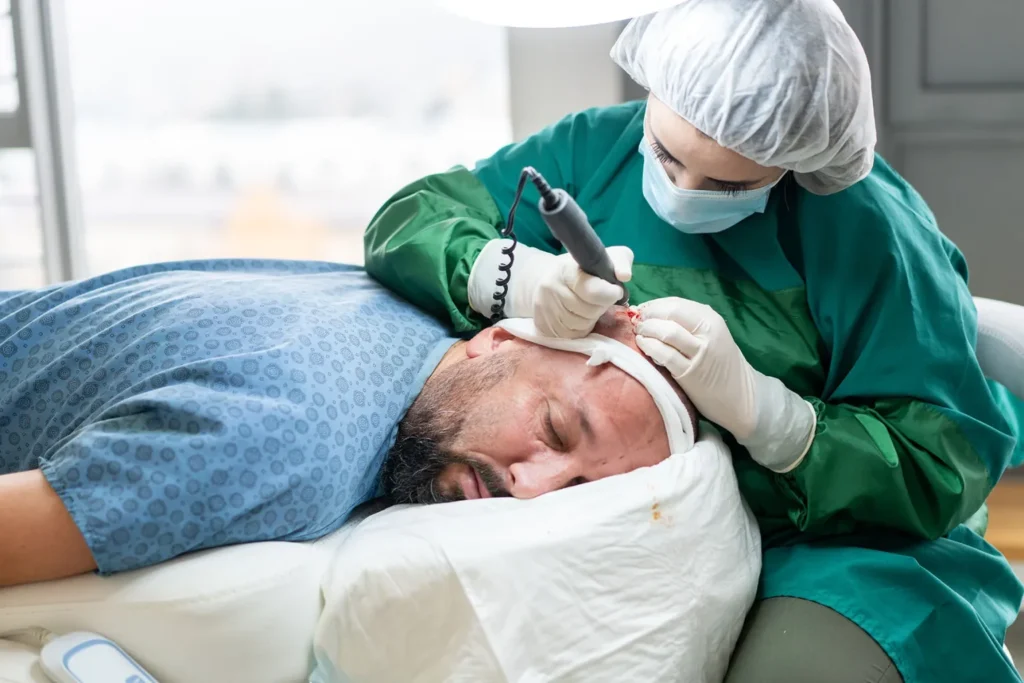Hair Transplants

What Is a Hair Transplant?
Like good health and youth, most of us take our locks for granted — until they’re gone. For many people, a hair transplant can help bring back what looks like a full — or at least a fuller — head of hair.
A hair transplant is a type of surgery that moves hair you already have to fill an area with thin or no hair. Doctors have been doing these transplants in the U.S. since the 1950s, but techniques have changed a lot in recent years.
Hairline transplant
Hairline transplant is the term doctors use to describe a hair transplant that restores a receding hairline. If you have a receding hairline, the hair along the top of your forehead and the temples starts to disappear. That causes your hairline to move backward, or recede. A receding hairline is a feature of male pattern baldness, the most common cause of hair loss among people assigned male at birth (AMAB).
Is a hair transplant permanent?
Hair transplants are designed to be permanent. When your doctor gives you the okay, you can treat your transplanted hair like the rest of your hair — wash, comb, and brush it as you like. However, there is a possibility that some hair grafts won’t survive and a small number may fall out.

Types of Hair Transplant Surgeries
There are two major types of hair transplants. Both procedures are performed in a doctor’s office. First, the surgeon cleans your scalp and injects medicine to numb the back of your head. Your doctor will choose one of two methods for the transplant: follicular unit strip surgery (FUSS) or follicular unit extraction (FUE).
Follicular unit strip surgery (FUSS)
Follicular unit extraction (FUE)
FUSS vs. FUE hair transplantations
Artificial hair transplants
How Does a Hair Transplant Work?
Who Can Get Hair Transplantation?
The ideal candidate for hair transplantation is someone who has the common form of hair loss that doctors call androgenetic alopecia. If you were assigned male at birth (AMAB), your hairline moves backward (or recedes) and the locks on top of your head become thinner. Over time, the top of your head may become bald. In people assigned female at birth (AFAB), hair usually becomes thinner on top, but the hairline doesn’t change. To get a hair transplant, you also need to have enough existing hair to harvest for replanting on the bare parts of your scalp.
Expectations and Hair Transplantation Recovery
Hair Transplant Cost
Hair Transplants Side Effects
What Are the Signs of Hair Transplants Gone Wrong?
As with any type of surgery, hair transplants don’t always work out as planned. Some signs that your hair transplant has gone wrong include:
- Poor growth of transplanted hair
- A weird-looking hairline
- Visible scars on the scalp
- Dead skin (called scalp necrosis)
- The incision wound has opened up
When to Call a Doctor
If you have a hair transplant and develop any of these symptoms, contact a doctor as soon as possible:
- Heavy bleeding
- A rash, skin bumps, or cysts (signs of infection)
- Wound incision opening
- Skin that has turned a dusky color and crusty
- Swelling in your face, which may be accompanied by hives and difficulty breathing (anaphylaxis)
Takeaways
What Our Customers Say

Sarah M.

The installation process was smooth and hassle-free. The team was knowledgeable and friendly. I highly recommend wellnessvoyage for their excellent service.
James L.
Needs Help? Let’s Get in Touch

